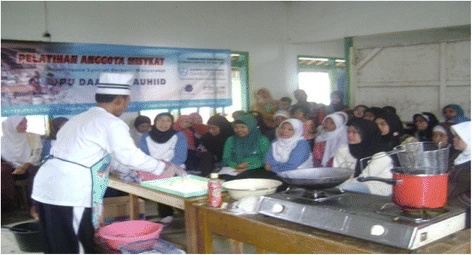By Mario Nunez
Origins and Promise
The concept of microloans, explored by Muhammad Yunus in 1983 through the establishment of the Grameen Bank, promised to revolutionize the financial industry by providing opportunities for low-income individuals to climb the economic ladder. Yunus’ vision was grounded in the belief that everyone, regardless of socioeconomic status, deserved access to credit and financial resources to improve their lives.
Impact and Challenges
Microloans originated as a response to the financial struggles faced by marginalized communities, aiming to empower individuals through access to credit and resources for small business ventures, education, and healthcare. However, their impact has been mixed. While microloans have shown positive effects in poverty reduction and women’s empowerment in developing countries like Ghana, Nigeria, and the Philippines, they also present significant challenges. The higher interest rates and shorter terms associated with microloans often pose obstacles for borrowers, leading to debt cycles and financial instability for vulnerable individuals.
The Role of Education
The true potential of microloans lies not only in their provision but also in their integration with education and support services. Educating borrowers about financial management, entrepreneurship, and business strategies is essential for maximizing the benefits of microloans and ensuring sustainable long-term outcomes. By providing borrowers with the necessary knowledge and skills to make informed financial decisions, microfinance organizations can empower individuals to effectively utilize their loans, invest in productive ventures, and build a path to economic stability.
Conclusion
In conclusion, while microloans offer promise as a tool for economic empowerment, they are not without challenges. The success of microfinance initiatives depends not only on access to credit but also on comprehensive support systems that prioritize education, transparent lending practices, and borrower empowerment. By addressing these challenges and integrating education into microfinance programs, we can unlock the full potential of microloans as a catalyst for positive economic change and poverty alleviation.
For a more in depth analysis click here
References
- Fanconi, P. A., & Scheurle, P. (2017). Microfinance – the Concept. In Small Money Big Impact
(pp. 11–32). John Wiley & Sons,
Incorporated.https://doi.org/10.1002/9781119351481.ch2 - Murphy & Kriss. (2023, September 29). Microloans: Overview and best microlenders.NerdWallet.https://www.nerdwallet.com/article/small-business/microloans# :~:text=A%20microloan%20is%20a%20small,people%20with%20limited%20credit%20histories.
- Asian Development Bank. (2022, September 8). How microfinance is helping poor households and businesses survive and thrive: 6 things toknow.https://www.adb.org/news/features/how-microfinance-helping-poor-households-a nd-businesses-survive-and-thrive-6-things
- Popoola, M. A., Brimah, Am. N., & Gbadeyan, A. R. (2019). Financial Institutions Micro Loans: A Strategy for Reducing Poverty in Nigeria. Financial Markets, Institutions and Risks, 3(3), 13–17. https://doi.org/10.21272/fmir.3(3).13-17.2019
- Karnani (2007). Microfinance misses its mark (SSIR). Stanford Social Innovation Review:Informing and Inspiring Leaders of Social Change. https://ssir.org/articles/entry/microfinance_misses_its_mark#
- Kompanion Financial Group. The Origins of Microfinance: Grameen Bank | Cases Volume 11.(n.d.).https://vol11.cases.som.yale.edu/kompanion-financial-group/microfinance/origins-microfinance-grameen-bank
- Sulemana, M., Fuseini, M. N., & Abdulai, I. A. (2023). Effects of microfinance and small loans centre on poverty reduction in Wa West District, Ghana. Heliyon, 9(12), e22685. https://doi.org/10.1016/j.heliyon.2023.e22685
- Hadi, R., Wahyudin, U., Ardiwinata, J. S., & Abdu, W. J. (2015). Education and microfinance: an alternative approach to the empowerment of the poor people in Indonesia. SpringerPlus, 4, 244. https://doi.org/10.1186/s40064-015-0995-6
- Drake, D. (2018, October 4). 5 truths about microfinance. Wharton Global Youth Program. https://globalyouth.wharton.upenn.edu/articles/social-impact/5-truths-microfinance/
- Attanasio, O. (2015, June 17). Can microcredit lift people out of poverty?. World Economic Forum.https://www.weforum.org/agenda/2015/06/can-microcredit-lift-people-out-of-poverty/#:~:text=Across%20all%20seven%20studies%2C%20microcredit,(three%20to%20si x%20years).
- Poverty: UN global compact. Poverty | UN Global Compact. (n.d.).https://unglobalcompact.org/what-is-gc/our-work/social/poverty#:~:text=More%20than%20700%20million%20people,of%20conflicts%20and%20climate%20change

